Greater Yellowlegs, Image by Ray Rozema
This month let’s learn about a shorebird in the sandpiper (or Scolopacidae) family called Greater Yellowlegs (Tringa melanoleuca). Greater Yellowlegs are elegant-looking wading birds that are around 11-14 inches in length. They were often hunted in the 1900’s and were considered to be “fine game birds.” Their population seems to be fairly stable today.
Greater Yellowlegs usually migrate (to change locations according to seasons) in small flocks in the spring and again in the fall and are considered medium- to long-distance migrants. They are often one of the first shorebirds to begin their spring migration.
Greater Yellowlegs are usually seen alone when they forage (hunt) for food. They move with rapid, jerking movements and a bobbing head. They have a high-stepping gait when they walk, will run with their necks extended when chasing prey, and will swim for short distances, usually when returning to shallower water or to escape from predators. Greater Yellowlegs have been referred to as “marshpipers” because they wade in deeper water than other sandpipers. At night, they roost (rest or sleep) in large flocks with other shorebird species.
Greater Yellowlegs nest in Canada and Alaska and often stay in mosquito-ridden, mossy swamps that have a considerable amount of dead vegetation. This inhospitable and remote habitat makes the Greater Yellowlegs one of the least-studied shorebirds on the continent. Many populations migrate south to their wintering grounds in southern California, near Baja, to Mexico, the West Indies, and to Central and South America. It’s hard to believe that there are populations of Greater Yellowlegs that migrate way down to the southern tip of Argentina!
Greater Yellowlegs are mostly seen in the Sacramento area from mid-June through April when they are not nesting in the north. They are very cautious birds and often are the first to sound an alarm when they think a threat is approaching. Their piercing alarm call alerts other birds in the area and helps humans to locate and identify the species.
What do Greater Yellowlegs look like?
Adult Greater Yellowlegs, Image by Daniel Lee Brown
Female and male Greater Yellowlegs look similar. In addition to having long and graceful yellow-to-orange legs, they are slender birds with an upright posture. They have long, pointed, and blunt-tipped bills that are slightly upturned. The bill length of Greater Yellowlegs is 1.5 times the length of their heads. Their face, neck, heads, and abdomens are white but are speckled with brown and gray. The area in front and around their eyes is often solid white. Greater Yellowlegs also have dark brown wings with pale spotting. In flight, their feet extend beyond their tails and their white rump and white tail that has dark barring (markings) are visible. During nesting season, their bills change to solid black and they develop darker barring on their flanks (or sides) and there is darker streaking on their heads, necks, and sometimes their abdomens as well.
Juvenile birds in general are less heavily marked; but they have more spotting on their backs and wings. Their white breasts have distinct dark streaks.
Their bright yellow legs, erect posture, white rump and tail, and the lack of wing bars make it fairly easy to distinguish Greater Yellowlegs from other North American shorebirds. However, there is a smaller sandpiper species called Lesser Yellowlegs (Tringa flavipes) that greatly resembles Greater Yellowlegs. Birders tend to ignore plumage (or feather color) when attempting to distinguish between these two species. Instead, they look at structure and shape.
Greater Yellowlegs (left) with Lesser Yellowlegs (right), Image by Mary Forrestal
Greater Yellowlegs are bulkier and have longer and thicker bills than do Lesser Yellowlegs. There is often a frontal neck bulge on the Greater Yellowlegs whereas the neck shape of Lesser Yellowlegs is sleeker or smoother. In the non-breeding season, the base on the bills of Greater Yellowlegs is lighter in color than that of Lesser Yellowlegs and Greater Yellowlegs have more distinct flank barring than do Lesser Yellowlegs. The size difference between these two species can usually only be appreciated when the birds are standing close to each other.
Where do Greater Yellowlegs live and nest?
During migration and in winter, Greater Yellowlegs are found in a wide variety of settings from coast to coast, including tidal flats, field, meadows, grasslands, coasts and shorelines, estuaries, rivers, streams, open beaches, mudflats, marshes, flooded agricultural fields, streams, shores of lakes, ponds, and sewage ponds. They nest both in the North American tundra (treeless Arctic regions) and in wet and muddy marshes or meadows in far northern coniferous forests.
Greater Yellowlegs’ well-camouflaged nests are located on the ground in slight depressions. The nests are often constructed on damp moss or peat and are lightly lined with twigs, grass, lichen, or leaves. Greater Yellowlegs’ nests are frequently near water and are often close to an object, such as a log, mound of moss, shrub, or tree. Adult birds will often perch on top of trees near their nesting sites to keep watch.
Nesting pairs are widely spaced apart so that the territory of each pair is maintained. There are 3 or 4 eggs laid in a nest and the nestlings hatch after around 23 days. It is believed that both parents help incubate the eggs (to sit on and keep eggs warm) and to feed the newly hatched young. The young leave the nest within 24 hours of hatching and can immediately find all their own food! The parents lead them to shallow ponds near grass and shrubs. The fledglings will begin learning to fly 18-25 days after hatching and the parents watch over them until that time. Parents protest loudly if predators come around.
Great Yellowlegs, Image by Rich Howard
What do Greater Yellowlegs eat?
Greater Yellowlegs are known to eat a variety of foods including insects, insect larvae, and other invertebrates, such as mollusks. They also eat small fish (such as minnows), crustaceans, snails, marine worms, frogs, seeds, and sometimes berries. Greater Yellowlegs forage in shallow water both in the day and nighttime and they swallow their food whole. Their bills are very sensitive, allowing the birds to feel the contents of the mud and sand as they stir the water and probe for food. Greater Yellowlegs are very active when foraging and are seen moving their heads back and forth while the tip of their bills are submerged in the water. The birds will often stab at the mud or the water’s surface to capture prey.
What do Greater Yellowlegs sound like?
Greater Yellowlegs are often extremely vocal. Their call is usually a 3 (sometimes 2 or 4) note whistle-like call that’s made during flight or right after they land. The third syllable is often lower in pitch. Their call has been described as “tew, tew, tew”, or “a series of sharp high-pitched notes”, or “a series of musical whistles”. Their song has been described as “a loud, ringing, whistled song”. In comparison, the flight call of Lesser Yellowlegs is only 1-2 notes.
These sounds of the Greater Yellowlegs are from xeno-canto. More Greater Yellowlegs vocalizations can be found at: https://xeno-canto.org/species/Tringa-melanoleuca

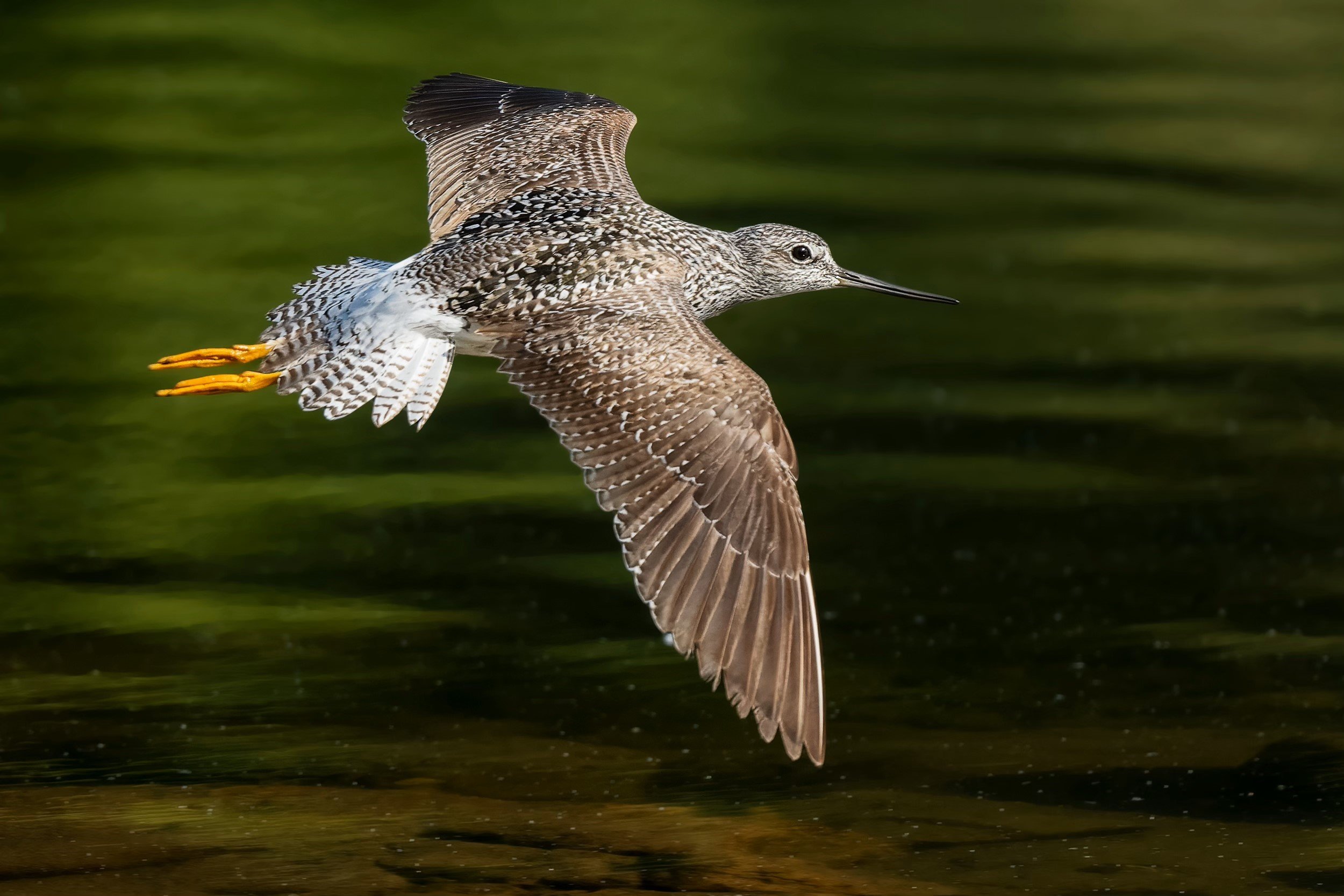


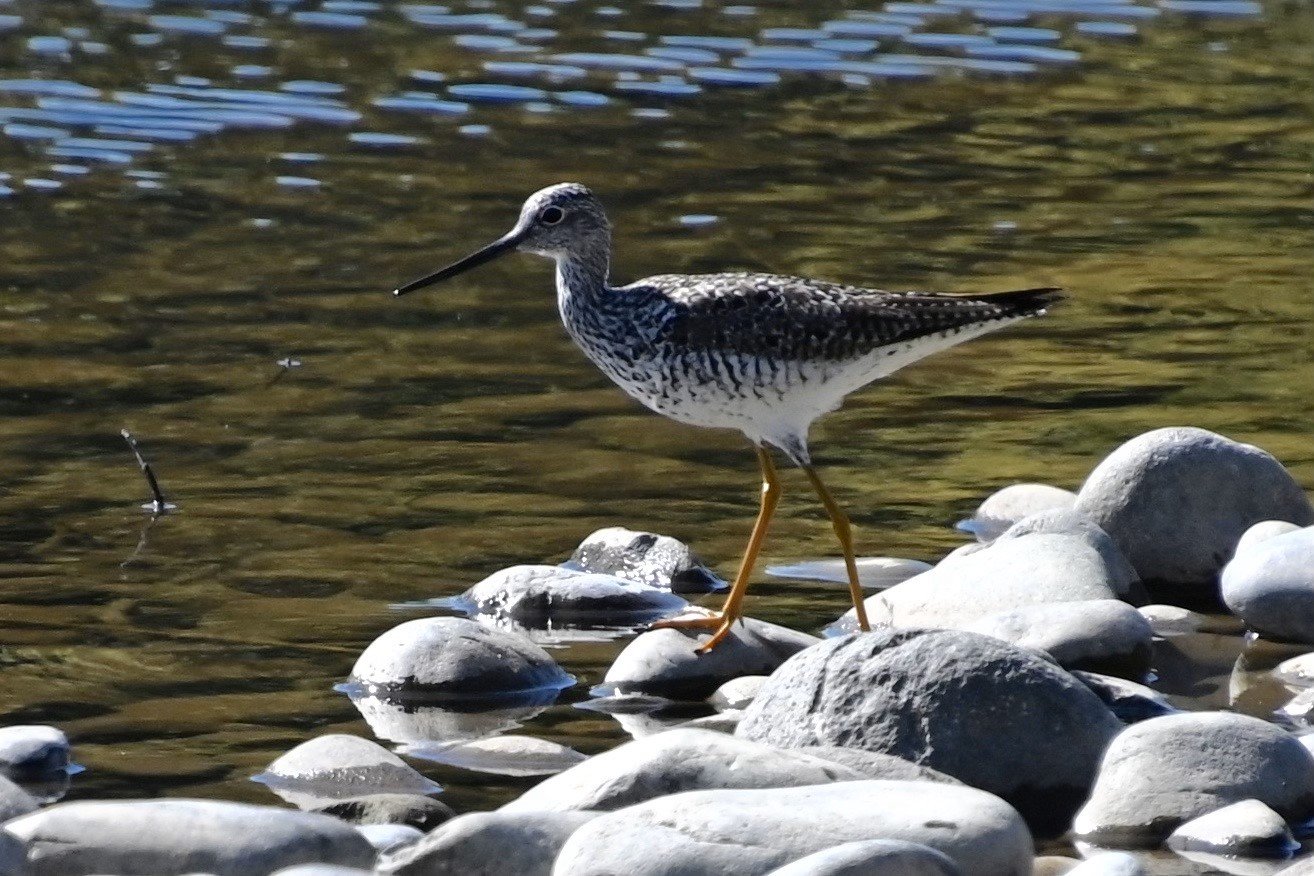

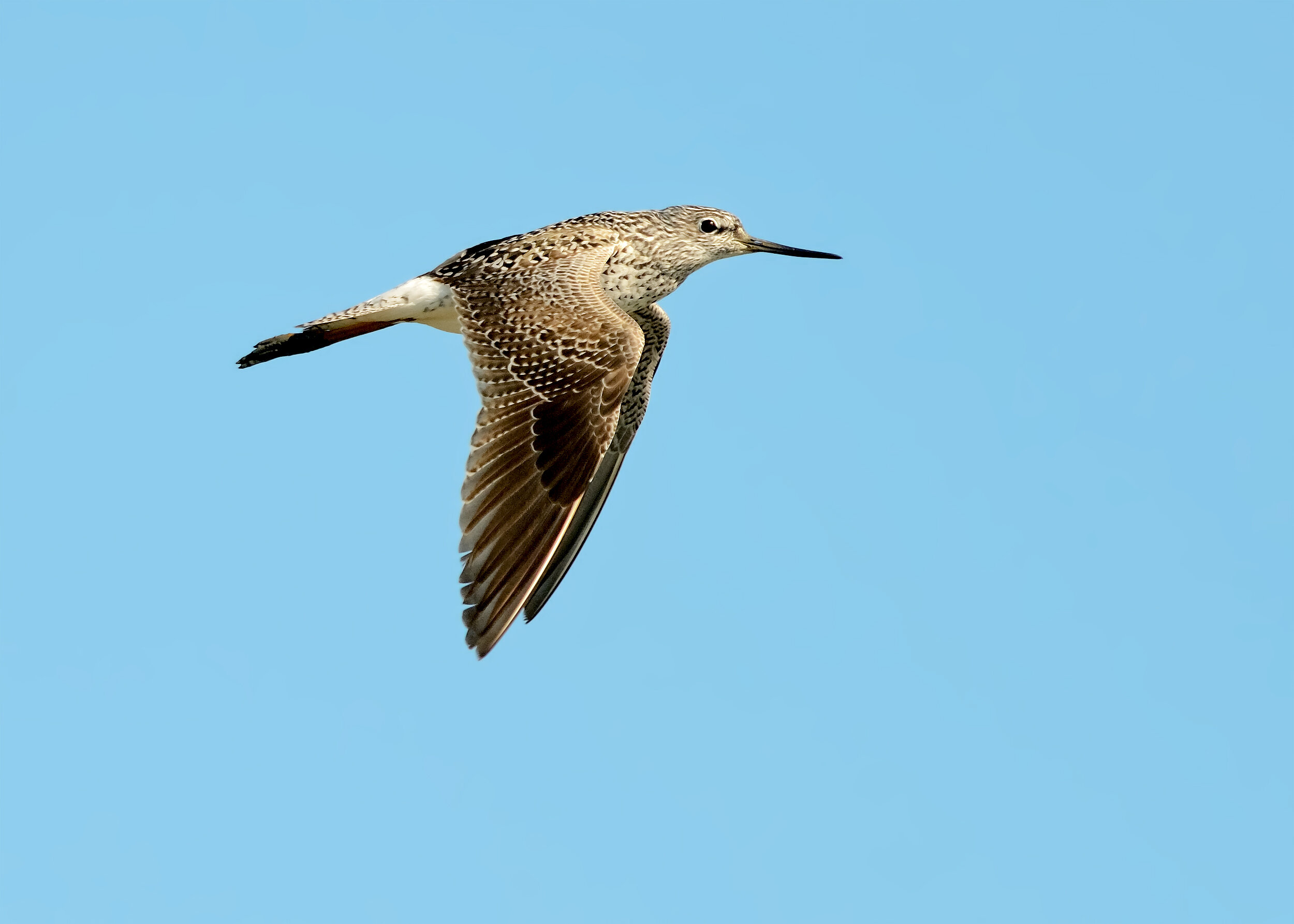
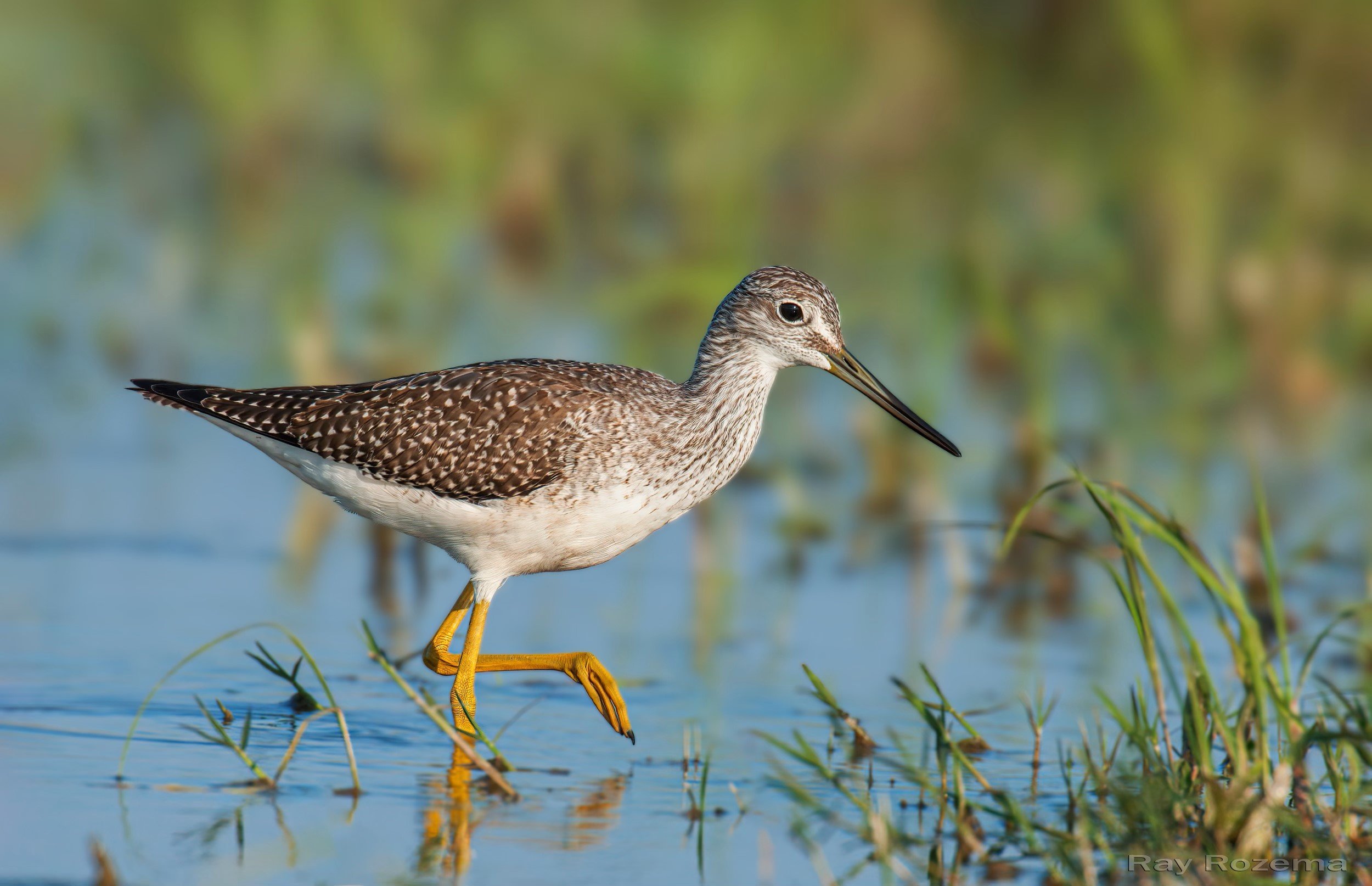
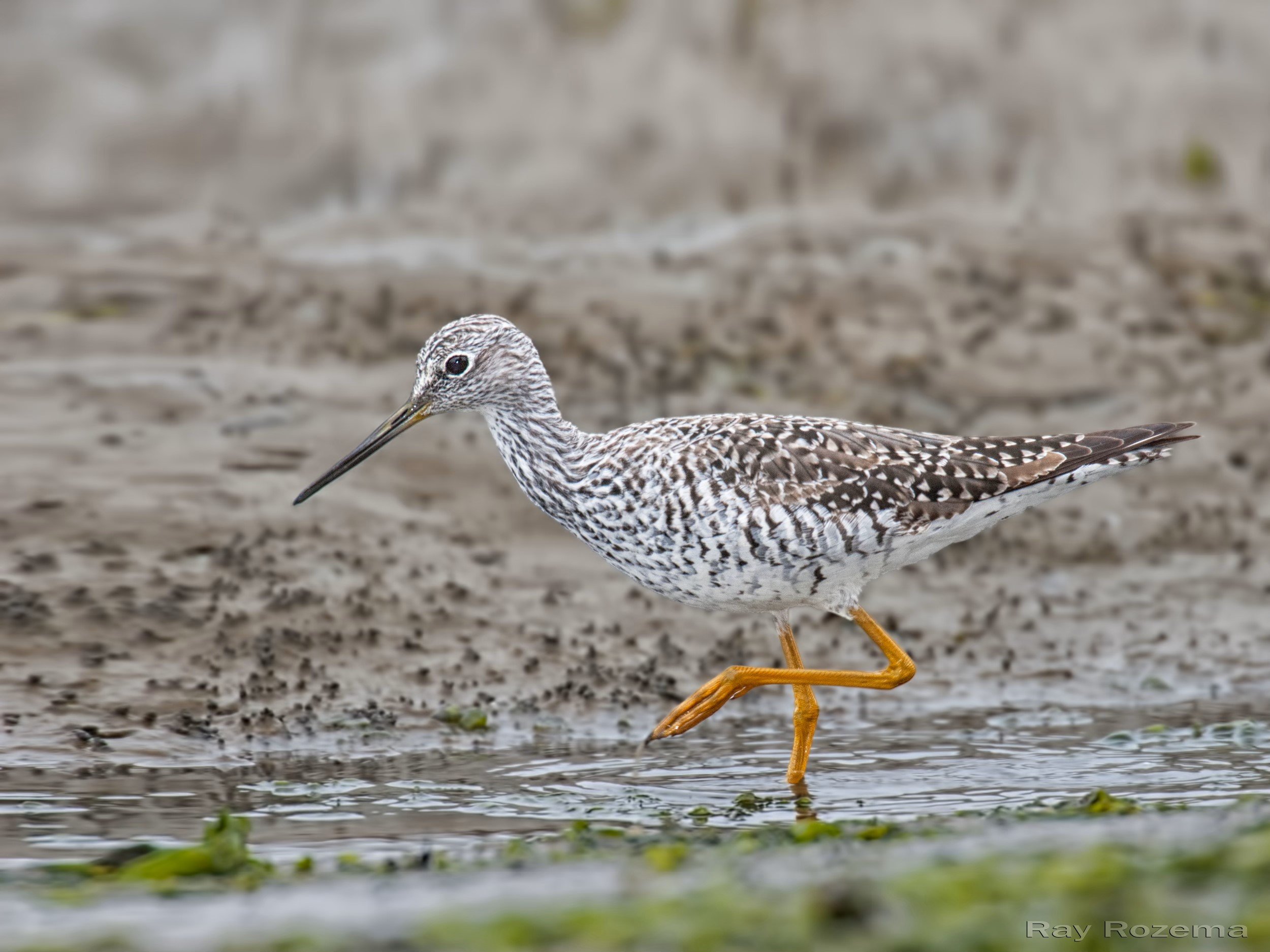
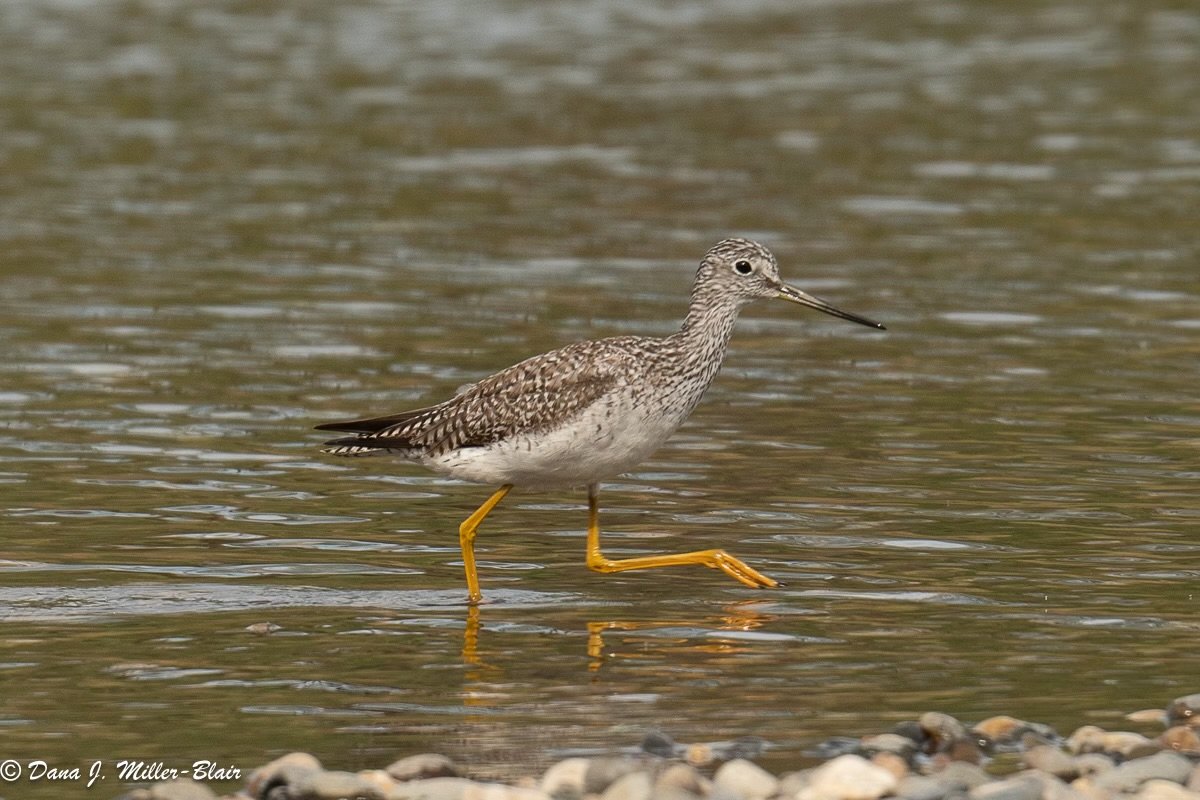

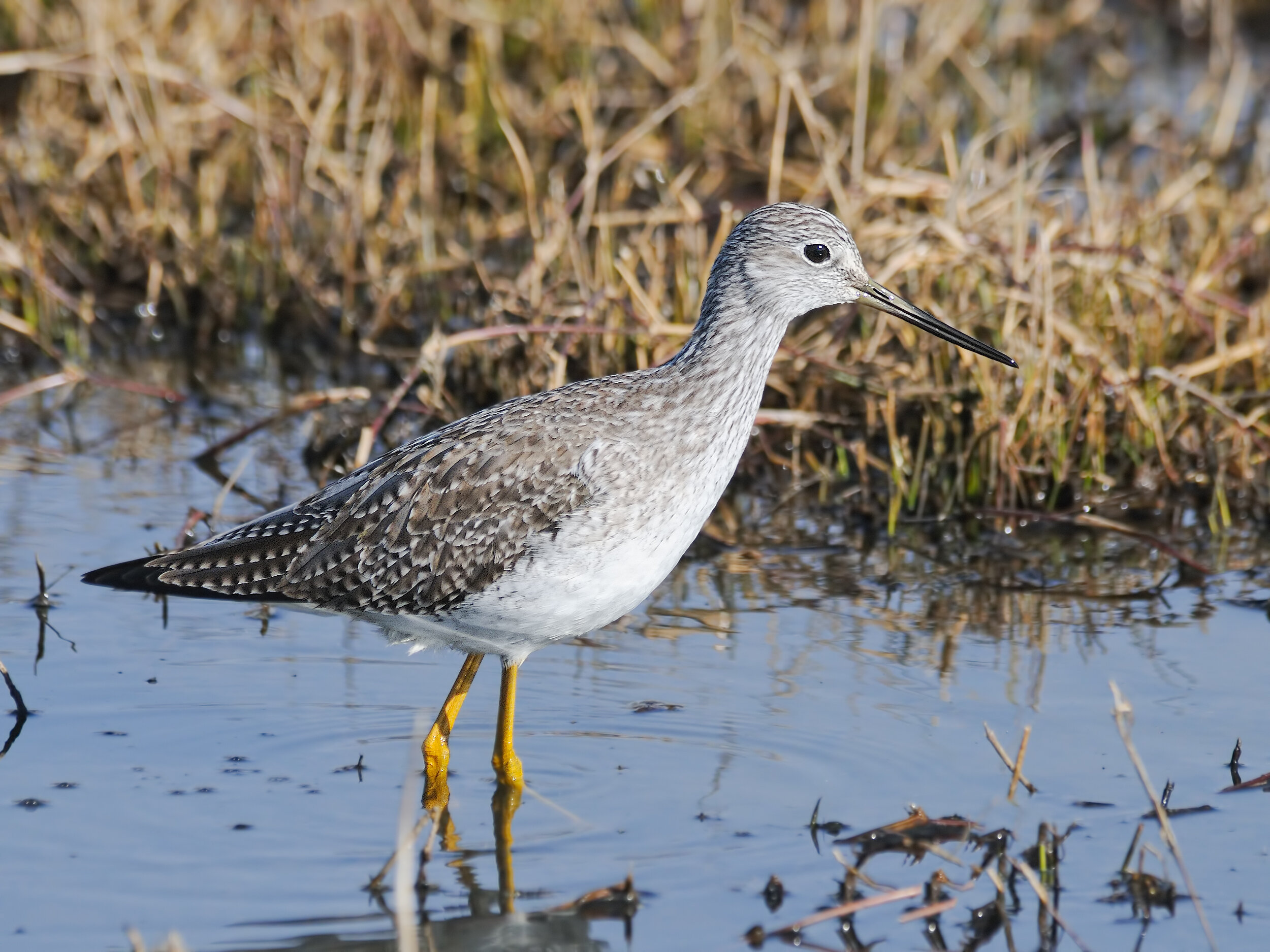

This article was compiled by Jane Van Kessel
Sources include Cornell’s All About Birds and Birds of the World, National Audubon Society Field Guide, 150 Frequently Seen Birds of California’s Great Valley, Sibley Birds West: Field Guide to Birds of Western North America, Second Edition, by David Allen Sibley, National Geographic Field Guide to the Birds of North America, 2017 edition, Kaufman Field Guide to Birds of North America by Kenn Kaufman, eBird.org, NatureWorks New Hamshire PBS, Edisto Island Open Land Trust, Wikipedia



